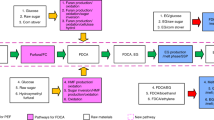Abstract
The goal of this study was to calculate the average CO2 emissions for manufacturing three commodity plastics, polyethylene (PE), polypropylene (PP), and polyvinyl chloride (PVC) in Japan. The CO2 emissions were calculated from cradle to gate, excluding the calcination processes after use. As the results, the followings were observed:
1) The gross CO2 emissions for the manufacture of plastics in Japan were 1.3, 1.4, and 1.7 kg-CO2/kg-PE, PP, and PVC, respectively. These mainly reflected the difference of CO2 emissions for the in-house electricity generation. 2) The CO2 emissions for the electricity used for manufacturing PVC were higher than that used for PE and PP, because additional electricity was required for the electrolysis to produce chlorine. The gross electricity consumption for manufacturing PVC was 1.3 kWh/kg-PVC, and the other plastics consumed 0.5 kWh/kg-Products. In addition, the effects of energy saving were studied using a projected gas-diffusion electrode for the electrolysis of salt on the reduction of CO2 emissions. It was estimated that the reduction in CO2 emissions was 7% compared with the present PVC manufacturing processes.
Similar content being viewed by others
References
Japan Petrochemical Industry Association (1998): Present Status of Petrochemical Industry, 1998
Plastic Waste Management Institute, Japan (1999): Report on the LCI Data for Petro-chemical Products
Association of Plastics Manufacturers in Europe (1999): Eco-profiles of Plastics and Related Intermediates: http://lca.apme.org/
Japan Soda Industry Association (1998): Soda and Chlorine 11, p475
Vinyl Environmental Council (VEC), Japan: http://www.vec.gr.jp.
Research and Statistics Department, MITI (1999): Census of Manufacturers 1997. Printing bureau, Ministry of Finance, Tokyo, Japan
[7]Research and Statistics Department, MITI (1999): The Structural Survey of Energy Consumption in Commerce, Mining, and Manufacturing, 1997. Statistical association of International Trade and Industry, Tokyo, Japan
Research and Statistics Department, MITI (1999): Yearbook of the Current Survey of Energy Consumption in Manufacturing, 1997. Statistical association of International Trade and Industry, Tokyo, Japan
Yamanaka T (1999): Measures on CO2 Emission and Recycling. Research Institute of International Trade and Industry, p 275
Environmental Policy Division, MITI (1997): Global Environmental Vision. Research Institute of International Trade and Industry, Tokyo, Japan, p 210
Author information
Authors and Affiliations
Corresponding author
Rights and permissions
About this article
Cite this article
Narita, N., Sagisaka, M. & Inaba, A. Life cycle inventory analysis of co2 emissions manufacturing commodity plastics in japan. Int J LCA 7, 277–282 (2002). https://doi.org/10.1007/BF02978888
Received:
Accepted:
Issue Date:
DOI: https://doi.org/10.1007/BF02978888




